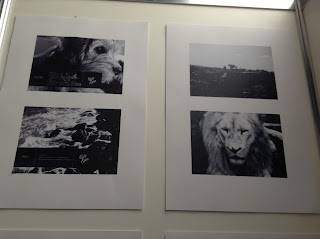Russian Constructivism was a movement created by the Russian avant-garde, which began in 1913 that quickly reached the rest of the continent and remained active until the 1940s. The movement was influenced by another pervious art movement called Cubism, which was the very first style of abstract art, letting other artists see work in a whole new perspective. The name was generated from Russian artists whose work was in a constructed order or manner. The name referred to a group of artists who wanted to move on from the autonomous art object, extending the definition of abstract art to include practical design work. The development of this movement was fed by the Revolution of 1917, which made artists want to find and create a new visual environment which included the social needs and values of the new Communist order.
The movement often has geometric and minimal themes, which are experimental and rarely emotional, but also has a devotion to modernity. Subjective and individualistic forms weren’t really suited to the style, where as objective forms that has a universal meaning were more suited to the movement. It was also characterised by its precision, clear formal order, impersonality, simplicity and contemporary materials used. One common factor within this movement is the use of stencil-like sans serif typefaces, which is featured on many pieces of work. he artwork that featured in this movement was usually art that was broken down into its most basic elements such as shapes. The style was rather orderly, which was crated by the use of new media. The need for order was needed at the time as the movement happened just after WWI, where the there was still a need for unity, peace and understanding. The artists still worked in the traditional artistic media of painting and sculpting as well as experimenting with photography such as photomontage.
The materials that were involved in this movement, such as industrial materials like glass; steel, and plastic were still used by other artists that weren’t big influences in the movement. A range of different artists such as painters, sculptors and even photographers used these materials in their work. The Russian Constructivist era was brought to a sudden end with the death of a Communist leader in Stalin’s dictatorial rule. The Stalinists called an end to the movement as they considered it to be too rarefied to serve as an effective form of state propaganda. The Constructivist designers who refused to co-operate retired from their public life, and fled the country or got paid visit from the police in the early hours of the night.
Personally, I really like this art movement as it’s very unique compared to the others, it has a broader range of materials and interesting compositions. I also like the combination of photographs from different angles and different colours, aswell as the use of angular shapes at odd angles, which make it stand out and draw your attention to it. I also like how coloured paper with different visual textures are used, it gives a really strong mixed media effect, along with the main colour theme of red, allowing you to easily recognise a piece of work from the era.









